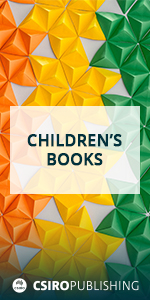BT20089A threatened ecological community: research advances and priorities for Banksia woodlands
 , Lauren N. Svejcar
, Lauren N. Svejcar  , Bronwyn M. Ayre
, Bronwyn M. Ayre  , Julian Bolleter
, Julian Bolleter  , Aaron Brace, Michael D. Craig
, Aaron Brace, Michael D. Craig  , Belinda Davis, Robert A. Davis
, Belinda Davis, Robert A. Davis  , Eddie J. B. van Etten
, Eddie J. B. van Etten  , Joseph B. Fontaine
, Joseph B. Fontaine  , William M. Fowler
, William M. Fowler  , Ray H. Froend
, Ray H. Froend  , Christine Groom
, Christine Groom  , Giles E. S. J. Hardy
, Giles E. S. J. Hardy  , Paula Hooper
, Paula Hooper  , Anna J. M. Hopkins
, Anna J. M. Hopkins  , Michael Hughes
, Michael Hughes  , Siegfried L. Krauss
, Siegfried L. Krauss  , Matthias Leopold
, Matthias Leopold  , Ben P. Miller
, Ben P. Miller  , Russell G. Miller
, Russell G. Miller  , Cristina E. Ramalho
, Cristina E. Ramalho  , Katinka X. Ruthrof
, Katinka X. Ruthrof  , Christopher Shaw, Jason C. Stevens
, Christopher Shaw, Jason C. Stevens  , Ryan Tangney
, Ryan Tangney  , Leonie E. Valentine
, Leonie E. Valentine  , Erik J. Veneklaas
, Erik J. Veneklaas  and Richard J. Hobbs
and Richard J. Hobbs 

Urban expansion is a risk to biodiversity at a global scale, with cities all over the world facing challenges of balancing urban growth and conservation. The expansion of the Perth metropolitan area in Western Australia and the conservation of Banksia woodlands within which Perth exists is a prime example of this challenge. In this review, we present a case study of advances in science for a threatened ecological community, and provide research priorities and future directions that will advance conservation and management of this ecosystem.
BT20089 Abstract | BT20089 Full Text | BT20089PDF (3.2 MB) | BT20089Corrigendum (3.2 MB) | BT20089Supplementary Material (323 KB) Open Access Article






